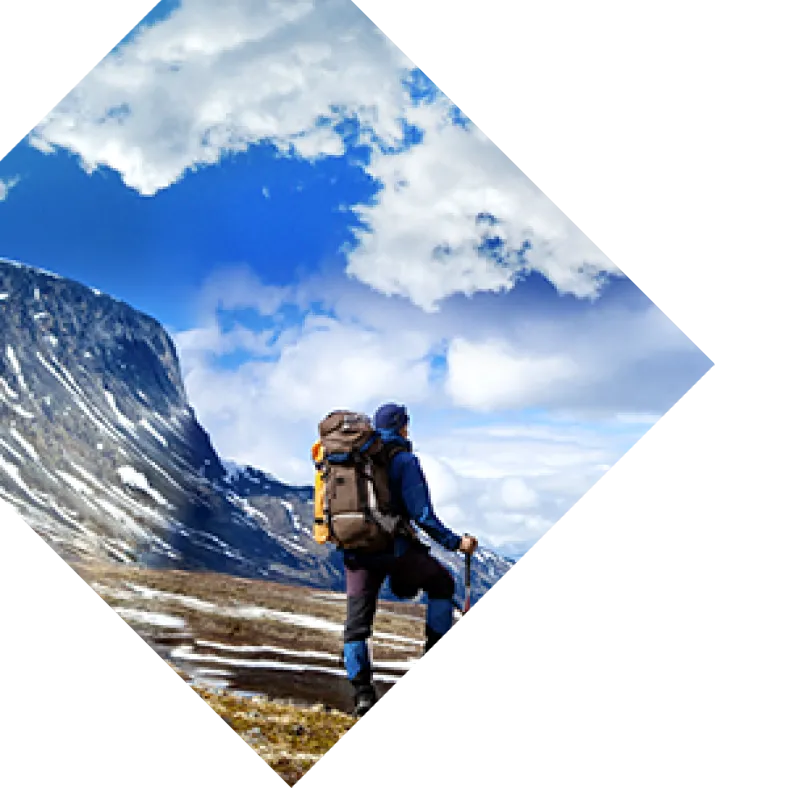I had been on a few Norwegian ferries before, but never one with sickness bags hanging next to every table in the cafe. On my mental list of “Things to Prepare For” before our bike tour in Norway, I hadn’t thought of seasickness. The first clue was when we rolled our fully loaded bikes onto the 7 p.m. Andenes–Gryllefjord ferry next to all the cars. One of the attendants walked over and strapped them to the wall so they wouldn’t fall over when the pitching and rolling started. We found seats upstairs in the cafe as the engine growled and vibrated the whole boat, and I took note of the little bags. They were just like the bags stuffed in the back of seats on an airplane, and I watched the rest of the nearby passengers for signs that they might be potential pukers. Then, the boat took off across the open water for an hour and 40 minutes of tossing.

Outside the windows, the evening sun washed everything in gold. The waves crashed in the ocean, and chairs slid across the deck before slamming into the walls as the boat slowly rolled from one side to the other. Everyone, whether inside or outside, tried to adjust their balance. They held onto coffee cups to keep from spilling the hot content and tried to lean on anything solid to keep from falling over. Some people want to know what the end of the earth feels like—the North Pole, the South Pole, out in the middle of one of our huge oceans with no boats or land on the horizon. I didn’t want the end of the earth; I wanted to see a place that felt like the end of civilization: cold, sparsely populated, so far north the sun shone for 24 hours in the summer and almost not at all in the winter—but with a good coffee shop every few dozen miles. Not quite an expedition to somewhere almost inhabitable, but definitely not a vacation to somewhere charmingly hospitable. Packing list items: puffy jackets, GORE-TEX shells, bike gloves plus mittens to layer over the top, Chamois Butt’r, and swimsuits—just in case.

We went to Norway to explore the regions of Lofoten and Senja—nine islands all above the Arctic Circle—by bicycle. The story of traveling by bike in that part of the world is a story about water, frozen or liquid. 1000-meter-high peaks hold snow year-round that drops into glacier-carved fjords. Bridges and ferries jump the gaps between islands. And Norway is famous for its rain. Everyone on our ferry held down their lunches, despite the sea’s best efforts to drive them into vomiting fits. I had some waffles from the cafe and ate them while cautiously holding my paper plate to keep it from sliding off the edge as the waves knocked the boat around. One woman had a fairly colossal crash into a booth where a couple sat, but thankfully she wasn’t injured. Most people would just giggle as they stumbled across the floor on their way to the restroom. When we finally reached Andenes (population 2,700) we waited for all cars to drive off the ferry before we rolled our bikes onto solid land. The midnight sun wasn’t so much as threatening to set at 8:40 p.m. as I stepped onto my pedals. I followed six other cyclists onto the road in the golden light, buffeted by a chilly 20 mph wind gust to remind us that although it looked like a summer evening, we were still at 69 degrees north. The idea was to ride from Tromsø, a city of 70,000 people and home to the northernmost university in the world, to Å, a tiny village at the end of the paved road in the Lofoten Islands. Our route would take us over about 300 miles of roads and highways, with a handful of boats in between islands where bridges hadn’t been built.

We learned a couple things right away. The first was that you can camp pretty much anywhere you want in Norway. They have a concept called “allemannsretten,” which means “all man’s right.” In the case of a touring cyclist, that means you can pitch your tent anywhere you’d like as long as it’s 150 meters from a building. The second was that camping in a place where the sun doesn’t ever set really messes with your sleep cycle. After departing the Andenes–Gryllefjord ferry on day two, we took our time finding the perfect campsite. Once we got there, we cooked dinner on our backpacking stove at 11:30 p.m., went to bed at 12:40 a.m., and woke the next day at 1:40 p.m. to ride down the one-lane coastal highway in intermittent rain.

We pedaled into the evening through rural coastal villages, assuming they were quiet little towns before we realized that part of the quiet might have been because everyone had gone to bed. After all, it was 9:30 p.m. But we were on vacation, so we kept riding until we found a campsite before we cooked a meal we still referred to as “dinner” even though we ate it at 12:30 a.m. With all the free camping, two career dirtbags weren’t going to spring for a hotel, so we only went indoors at coffee shops and ferries. Halfway through the trip, we jumped on the Hurtigruten, the historic Norwegian coastal mail fleet-turned-cruise line. We leaned our bikes on a deck rail and watched the captain steer the boat into and out of the 100-meter-wide Trollfjord with a skilled U-turn. All the much-more-recently-showered passengers stood outside on the deck, taking photos and marveling at how water had shaped the land here, and how humans had learned to navigate that water.

When we were on our bikes, we never got far from water. We pedaled on roads that hair pinned at the end of turquoise-blue fjords and through dark highway tunnels dripping with snowmelt from somewhere high above. We camped with fjord views whenever we could find a piece of land flat enough to support a tent (even if the presence of water meant the presence of armies of mosquitoes). And we bicycled to the fishing village of Henningsvær, on a tiny rock island only connected to land by two bridges since 1983. At an average of 10 or 11 mph, I was convinced that bicycles were the best way to see these islands. After all, we were able to hug the fjords without a vehicle roof blocking any view. For most of the trip, we avoided getting wet, only riding through brief periodic showers. Our second-to-last day, though, we agreed to go for a full-immersion experience. We locked our bikes to a guardrail at the trailhead for Kvalvika Beach, a walk-in-only cove on the western side of the island Moskenesøya, carried our panniers up a 200-meter-tall pass and down the other side to the cove, population approximately 30—sheep.

We set up our tent on a grassy patch overlooking the ocean waves gently bumping a white sand beach the size of a couple football fields, changed into swimming suits, and debated whether the water we were looking at was technically the Norwegian Sea or the Arctic Ocean. Without a cell phone signal, we had no ability to ask the internet, so we decided it was the Arctic Ocean because that sounded cooler. A few other people frantically ran into the water, turning around when it hit their thighs before comically running back onto the beach to huddle inside towels. A man in his early 60s strode across the beach in a Speedo and walked into the water, proudly swimming for a solid minute and a half before he walked across the beach and back to his tent. He was so casual it was as if he were walking back to a chaise lounge from the pool bar at the Golden Nugget in the heat of a Las Vegas summer afternoon. I had nothing to prove, only a moderate amount of curiosity and a slight foolish hope that a few seconds in Arctic water would soothe the sore muscles and joints that had powered my bike for the past eight straight days. I popped off my sandals, peeled off my shirt, and sprinted into the water as the wave hit the beach and started rolling away. As soon as I was hip-deep, I dove straight in, taking the ripping-off-a-band-aid approach. Immediately my heart rate shot up and my body screamed: You. Idiot. Get Out Of The Arctic Ocean. And like everyone we’d watched except the guy in the Speedo, I stood up and sprinted to the beach like Wile E. Coyote. After all those days of pedaling right by the water, I finally got in. And I’m pretty sure my joints felt a little better after the six or seven seconds of therapeutic soaking in 33-degree salt water. I think I found the end of civilization, with a handful of other people, a sun that doesn’t set but gets close to the horizon around midnight, sore muscles, and a beachfront campsite just a few hundred steps from an ocean that’s almost warm enough to swim in.
You may also enjoy
View all articles in this categoryRoad Cycling
Gear Guide: 8 Essentials for Bike Touring the Lofoten Islands
Whether you're bike touring Norway or somewhere stateside, Brendan Leonard has some tips on how to pack for the pedal of a lifetime.

Road Cycling
The Planet D Wants You to Get Out There
What happens when a bucket list turns into a career? You roll with it! The Planet D shares its story of forfeiting the daily grind for daily adventures.

Road Cycling
Introducing GORE-TEX Active Products with New Permanent Beading Surface
You wanted something lighter and more road-ready, but still wanted it to be breathable. You got it!


